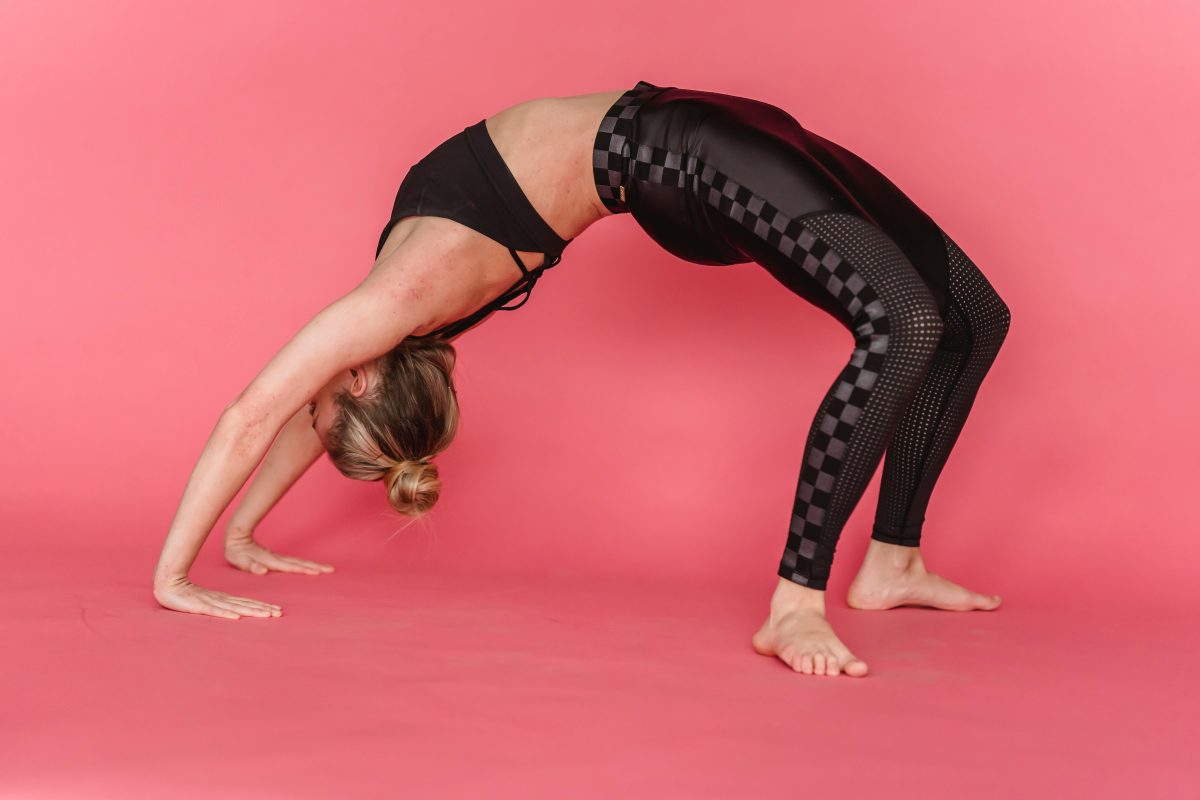Last Updated on: 14th July 2024, 09:06 am
Understanding Common Yoga Injuries

Yoga, a practice revered for its myriad of health benefits, is not without its risks. Injuries can and do occur, often when we least expect them. These injuries typically fall into categories such as strains, sprains, and joint injuries. Each type presents its own set of challenges and requires specific attention and care.
- Strains and sprains are common, resulting from overstretching or tearing muscles and ligaments.
- Joint injuries, on the other hand, can be more severe, involving the knees, wrists, and spine. These injuries often arise from improper alignment, overexertion, or neglecting the body’s signals of discomfort.
High-risk poses and movements are usually the culprits behind these injuries. Poses that require extreme flexibility or strength, when performed without adequate preparation or supervision, can lead to significant harm. It’s crucial to approach these poses with caution, respecting the body’s limits.
Understanding these risks is the first step towards a safer yoga practice. By recognizing the potential for injury, practitioners can adopt a more mindful approach, ensuring a fulfilling and injury-free journey on the mat.
The Importance of Proper Warm-Up

Before diving into the heart of your yoga practice, a proper warm-up stands as the cornerstone for a safe and effective session. Warming up primes the body, enhancing flexibility and reducing the risk of injuries. It’s a vital step that sets the stage for a harmonious practice, aligning body and mind.
Benefits of Warming Up Before Yoga
- Engaging in a warm-up routine increases blood flow to the muscles, making them more elastic and ready for the stretches ahead.
- This preparatory phase not only boosts performance but also minimizes the chances of strains and sprains.
Recommended Warm-Up Exercises
- Begin with gentle joint rotations, starting from the neck and working down to the ankles. This lubricates the joints, safeguarding them against the strain of more intense poses.
- Follow this with dynamic stretches such as arm swings and leg lifts, which further awaken the muscles.
- Incorporating a few minutes of sun salutations can beautifully bridge the gap between warm-up and the core practice, syncing breath with movement.
How Warming Up Prevents Injuries
By gradually increasing the heart rate and circulation, warm-up exercises prepare the muscles and joints for the demands of yoga, significantly reducing the risk of injury. This gentle beginning helps in identifying any physical discomfort early on, allowing for adjustments before engaging in more challenging poses. It’s a protective measure, ensuring that the journey through yoga is both enriching and safe.
Integrating a comprehensive warm-up routine is not just about injury prevention; it’s about respecting the body’s needs and enhancing the overall yoga experience. It’s a testament to the practice’s principle of mindfulness, encouraging a deeper connection with oneself.
Mastering the Fundamentals

Importance of Foundational Poses
At the heart of a safe and effective yoga practice lies a solid grasp of foundational poses. These basic structures are the building blocks for more advanced movements, ensuring a balanced and injury-free progression. By focusing on these core poses, practitioners develop a keen awareness of their bodies, learning to move with intention and precision.
Alignment and Posture Tips
- Proper alignment is crucial for reaping the full benefits of yoga while avoiding strain and injury. Start by grounding your feet firmly in standing poses, distributing weight evenly.
- In seated or reclining positions, ensure your spine remains long and your core engaged. Shoulders should relax away from the ears, creating space and openness.
- Remember, each adjustment, no matter how small, enhances the pose’s effectiveness and reduces the risk of harm.
Building Strength and Flexibility Gradually
Yoga is a journey, not a race. Gradually building strength and flexibility is key to a sustainable practice. Begin with simpler variations, focusing on mastering the form before moving to more challenging poses. Incorporate props like blocks and straps to support your body, allowing it to open naturally over time. This mindful progression fosters a deeper connection to your practice, encouraging patience and perseverance.
Understanding and applying these fundamentals transforms yoga from mere exercise to a holistic discipline. It’s a path to physical wellness, yes, but also to mental clarity and emotional balance. By prioritizing foundational poses, proper alignment, and gradual progression, you safeguard your practice against common injuries, ensuring a rewarding and enduring yoga journey.
Listening to Your Body

Recognizing Pain vs. Discomfort
Understanding the difference between pain and discomfort is crucial in yoga. Discomfort might be a sign of your body stretching and growing, a necessary part of the journey. Pain, however, is a clear signal from your body that something is wrong. It’s a red flag, indicating that you need to stop and reassess your approach. Ignoring pain can lead to serious injuries, setting back your progress.
The Role of Mindfulness in Preventing Injuries
Mindfulness is your greatest ally on the mat. It involves being fully present in each moment, listening intently to what your body tells you. This heightened awareness can help you notice when a pose feels off, allowing you to adjust before an injury occurs. Mindfulness also encourages a slower, more deliberate practice, where safety always comes first.
Adjusting Poses and Using Props for Safety
Adjusting poses and using props are essential strategies for a safe yoga practice. If a pose feels uncomfortable, don’t hesitate to modify it. Yoga blocks, straps, and bolsters can provide support, making poses more accessible and reducing strain. Remember, yoga is not about pushing your body to its limits. It’s about finding balance and harmony. Props and adjustments are tools that help you honor your body’s needs, ensuring a safe and enjoyable practice.
By listening to your body, practicing mindfulness, and making adjustments as needed, you can avoid common yoga injuries. This approach not only enhances your physical safety but also deepens your connection to your practice, leading to a more fulfilling yoga journey.
The Role of a Qualified Instructor

Finding the Right Yoga Teacher
Finding the right yoga teacher is akin to discovering a guide for your journey. A qualified instructor not only understands the anatomy and philosophy of yoga but also connects with you on a personal level. They tailor sessions to meet your needs, ensuring a balance between challenge and safety. This personal touch transforms your practice, making each session more meaningful.
How Instructors Can Help Prevent Injuries
An experienced instructor is your first line of defense against injuries. They possess the keen eye needed to spot and correct misalignments or improper techniques. By offering personalized adjustments, they ensure that your body is positioned correctly, significantly reducing the risk of strains or sprains. Their guidance helps you navigate the fine line between pushing your limits and honoring your body’s capabilities.
Importance of Feedback and Adjustments
Feedback and adjustments are crucial components of a safe yoga practice. A good teacher provides constant feedback, helping you refine your poses and deepen your practice. They encourage you to listen to your body, making adjustments that enhance your alignment and stability. This ongoing dialogue between teacher and student fosters a sense of trust and safety, allowing you to explore your practice with confidence and curiosity.
Ultimately, the role of a qualified instructor cannot be overstated. They are not just teachers but also mentors and guides on your yoga journey. Their expertise, support, and insight help you avoid common injuries, ensuring a safe, enjoyable, and transformative practice.
Developing a Personalized Yoga Practice

Tailoring Your Practice to Your Body’s Needs
- Listen to Your Body: Start by tuning into your body’s signals, adapting poses to suit your flexibility and strength levels.
- Embrace Your Journey: Embrace where you are in your journey and allow your practice to evolve with you.
- Reduce Injury Risk: A personalized approach significantly reduces the risk of injury.
Incorporating Rest and Recovery Days
- Value of Rest: Rest is just as important as activity. Integrating recovery days into your routine gives your body time to heal and strengthen.
- Reflect and Absorb: Use these pauses to reflect and absorb the benefits of your practice.
When to Consider Therapeutic or Specialized Yoga
- Meeting Specific Needs: Consider therapeutic or specialized yoga when dealing with an injury, chronic pain, or stress.
- Safe Space for Healing: These practices offer gentle movements, breathwork, and meditation, providing a safe space for healing and restoration.
Navigating Advanced Poses Safely

Preparing Your Body for Advanced Poses
- Build a Foundation: Strengthen core muscles, enhance flexibility, and cultivate balance to prepare for advanced poses.
- Cultivate Patience: Preparation is not just physical; it’s about cultivating patience and perseverance.
Understanding the Risks of Advanced Yoga
- Recognize Risks: Be aware of the risks, such as overstretching and improper alignment, which can lead to injuries.
- Respect Your Limits: Awareness and respect for your body’s limits are paramount.
Strategies for Safely Advancing Your Practice
- Master the Basics: Master foundational poses as they are crucial for advancing safely.
- Use Props: Employ props to support and align your body properly.
- Listen to Your Body: Listen intently to your body’s signals; discomfort is a guide, not an obstacle.
- Seek Expert Guidance: Consider working with a qualified instructor for personalized guidance and adjustments.
In Closing
Yoga is a journey, not a race. This practice, when approached with mindfulness and respect, can be profoundly rewarding. By understanding and mitigating risks, we embrace a path that balances strength with flexibility, caution with courage. The article underscores the importance of warm-ups, foundational poses, listening to one’s body, the guidance of qualified instructors, and personalizing one’s practice to prevent common injuries. As we continue to explore the depths of yoga, let us do so with an open heart and a keen awareness of our limits and potential, ensuring a fulfilling and sustainable practice for years to come.
How to Avoid Common Yoga Injuries FAQs
Yes, practicing yoga too frequently without adequate rest can lead to injuries due to overuse and lack of recovery time for the muscles. It’s important to balance your practice with rest days and incorporate different styles of yoga to ensure a well-rounded practice that doesn’t overtax any one part of the body. Listening to your body and allowing time for muscle recovery is crucial to avoid overuse injuries.
Avoid overstretching by listening to your body and respecting its limits, never pushing into pain. Focus on a gradual progression in your practice, using props and modifications to support your body as it opens up over time. Building strength in the muscles you are stretching is just as important as increasing flexibility to prevent overstretching.
To prevent wrist injuries, ensure proper hand placement and distribution of weight. Spread your fingers wide and press down through the base of each finger, reducing pressure on your wrists. Engaging your core and arm muscles also helps to alleviate excess weight on your wrists.
Protect your knees by keeping a slight bend in them during standing poses and not locking them. Use props like folded blankets under your knees in poses that put pressure on them, and always align your knees with the direction of your toes to avoid twisting. Strengthening the muscles around the knees with poses like chair pose and bridge can also help.
Ensuring you’re breathing correctly involves maintaining a steady, rhythmic breath through the nose, which helps to keep the body relaxed and oxygenated during practice. Coordinate your movements with your breath, inhaling to expand or stretch, and exhaling to deepen or fold, which helps prevent strain and supports the body’s natural movements. Proper breathing also aids in concentration and maintaining a calm, focused practice, reducing the risk of injury.
To stop shoulder injuries, keep your shoulders aligned over your wrists in poses like plank and downward-facing dog. Engage your shoulder blades by drawing them down your back and avoid shrugging your shoulders to your ears. Strengthening and stretching the shoulder muscles with poses like dolphin and eagle can also improve stability and flexibility.
Yes, to avoid neck strain, keep your neck in line with the rest of your spine and avoid collapsing or overextending it. In poses where the neck is tilted back, like cobra or upward-facing dog, focus on lengthening the spine and using your core to support the movement. Gentle neck stretches before and after your practice can also help prevent strain.
Avoid lower back pain by engaging your core muscles and maintaining a neutral spine in poses. When performing forward folds or bending, hinge at the hips rather than rounding the lower back, and avoid overextending in backbends by lifting through the chest and lengthening the spine. Strengthening the core and back muscles outside of yoga can also provide better support and flexibility.
If you feel pain during yoga, you should immediately ease out of the pose or practice and assess the discomfort. Distinguishing between the sensation of a stretch and the pain of a strain is crucial; never push through sharp or shooting pain. Consulting with a yoga teacher for proper alignment and modifications, and if necessary, a healthcare provider, can help address and prevent further injury.
Prevent hamstring injuries by never forcing yourself into a deep stretch too quickly. Warm up properly before attempting intense stretches, and focus on maintaining a slight bend in the knees during forward folds to avoid overstretching. Incorporating strengthening exercises for the hamstrings and gradually increasing flexibility can also reduce the risk of injury.
Orlando is a all round athlete from Australia, now resident in Germany. His sports of passion of American Football(Offensive line), weight training and indoor rock climbing where he uses his 195cm wing span to his advantage.



